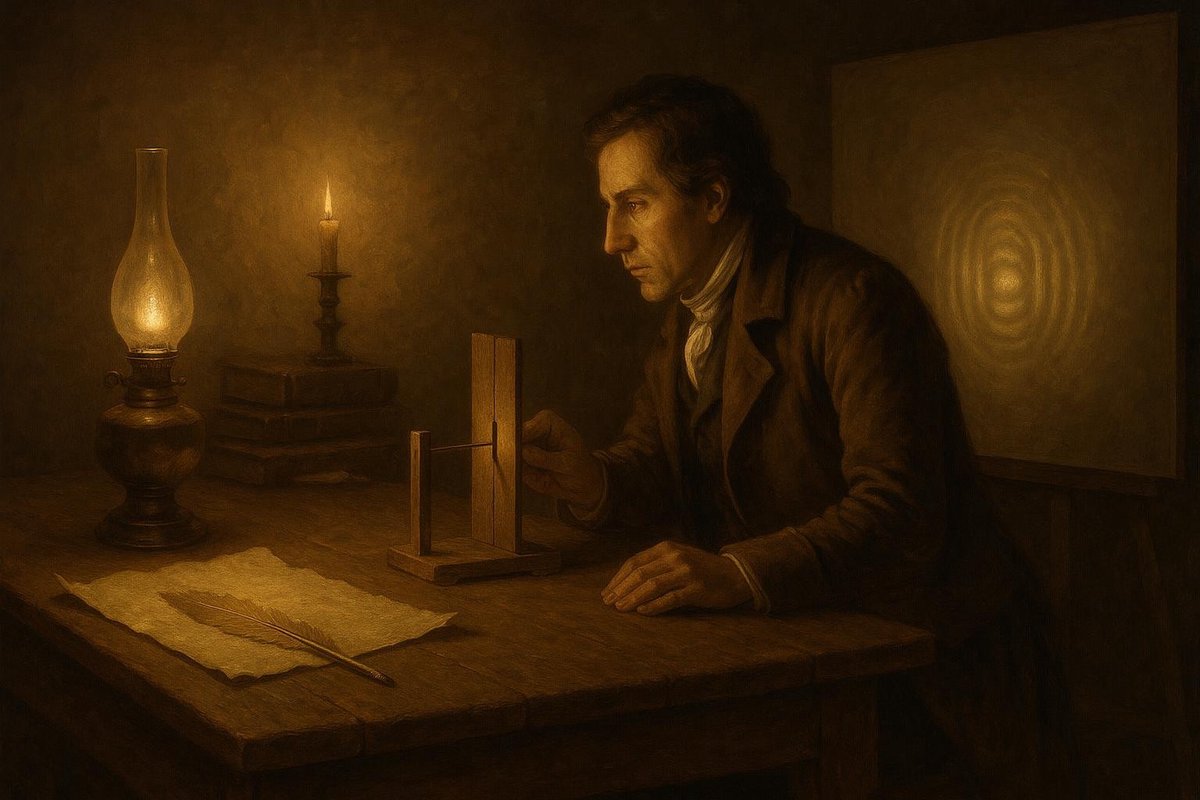
Hypothesis & Context
Imagine light not just as a beam, but as tiny particles. This was a daring idea proposed by Isaac Newton, who believed light was composed of corpuscles. However, it was Thomas Young’s curiosity that led him to challenge this notion in the early 19th century. Young’s goal was to demonstrate light’s wave nature, inspired by the work of Christiaan Huygens, who first theorized such behavior.
- Young pondered: If light were indeed a wave, it should exhibit patterns of interference.
- He aimed to create conditions where light waves could interact, much like ripples in a pond.
Interestingly, at the time, the scientific community was heavily influenced by Newton’s ideas. The wave theory of light was not widely accepted, making Young’s experiment both groundbreaking and controversial. The cultural backdrop of the Enlightenment, with its emphasis on reason and evidence, provided fertile ground for Young’s curiosity. No wonder this experiment was a beacon of scientific progress, challenging the status quo and daring to redefine the nature of light.
Setup & Method
Picture a dimly lit room with a simple setup: a single source of light, two parallel slits, and a screen. This was the scene of Young’s experiment in 1801. The method was deceptively simple, but its implications were profound. A monochromatic light source was aimed at the slits, casting patterns on the screen.
- Young carefully measured the distance from the light source to the slits and from the slits to the screen.
- He used a coherent light source to ensure uniform wavefronts.
The key instruments included a precise slit apparatus and a screen for observing interference patterns. Young’s meticulous attention to detail ensured that the experiment could reveal the true nature of light. This setup was both elegant and revolutionary, proving that innovative ideas could sprout from the simplest of designs. As time goes on, we see how this modest experiment paved the way for future explorations into the quantum realm.
Results & Reactions
What did Young observe on the screen? A series of bright and dark fringes, akin to a barcode. This interference pattern was clear evidence of light’s wave-like properties. The light waves passing through the slits overlapped, creating areas of constructive and destructive interference.
- The bright fringes represented areas where waves reinforced each other.
- Dark fringes signaled where waves canceled out.
Young’s findings stirred the scientific community. While some hailed the experiment as irrefutable proof of wave theory, others clung to Newtonian particle theory. The debate was intense, sparking discussions that would eventually lead to the development of quantum mechanics. As Charles Wheatstone later remarked, “The undulatory theory of light is now supported by many facts.” This experiment was a turning point, challenging established norms and inviting curiosity and skepticism alike.
Implications
The double-slit experiment not only confirmed light’s wave nature but also set the stage for the field of quantum physics. It challenged scientists to reconsider how particles and waves can coexist. The phenomenon of wave-particle duality emerged, suggesting that particles can exhibit both behaviors.
- This duality led to deeper questions about the fundamental nature of reality.
- Scientists began exploring how particles interact with their environment.
Albert Einstein himself was influenced by these findings, eventually formulating his theories on the nature of light. The implications extended beyond physics, impacting fields like chemistry and even philosophy. Quantum mechanics has since reshaped our understanding of the universe, from the tiniest particles to the vast cosmos. This experiment was more than a test of light; it was an invitation to unravel the mysteries of existence, a journey that continues to this day.
Fuel Someone Else’s Curiosity
As you ponder the profound implications of the double-slit experiment, consider sharing this scientific detective story with others. Spark a conversation, ignite curiosity, and delve deeper into the wondrous mysteries of quantum mechanics together. Who knows what new insights await when minds collaborate and curiosity reigns supreme?

Leave a Reply